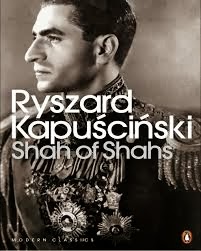India-Art
Mumbai: The Delhi Art Gallery — one of the national capital’s richest galleries with a vast archive of Indian classical and modern art — expanded its footprint in Mumbai inaugurating a new display space Feb 25, 2014 with an exhibition “The Art of Bengal” and unveiling of a book, “Emeralds”, an illustrated volume about the precious gemstone widespread in India as a heritage jewel discovered in the geo-surface of the earth five million years ago.
Mumbai: The Delhi Art Gallery — one of the national capital’s richest galleries with a vast archive of Indian classical and modern art — expanded its footprint in Mumbai inaugurating a new display space Feb 25, 2014 with an exhibition “The Art of Bengal” and unveiling of a book, “Emeralds”, an illustrated volume about the precious gemstone widespread in India as a heritage jewel discovered in the geo-surface of the earth five million years ago.
The gallery which promotes 20th century art has a collection
of over 32,000 artworks — ranging from early 20th century classicism
to the contemporary art post-Independence art continuing till date.
The exposition, “The Art of Bengal” features more than 200 works
documenting the movements in Bengal art in a chronological sequence from the 19th
century modernism to contemporary multi-media visuals.
The exhibition follows the journey of Bengal aesthetics with 19th century art when local and ethnic artists created vernacular
idiom based on micro-myths, lores and mythological legends using an array of
village-oriented crafts influenced artistic iconography like the pata chitra (scroll
narrative art) and the “battala” illustrations of north Kolkata printing
avenues.
The pata chitra as a oeuvre flourished in the villages around
Midnapore and Bankura district in the 18th century (though they date
back to over a millennium). In the 19th century, groups of scroll
painters from Midnapore migrated to Kalighat in Kolkata looking for sustenance during
the early years of the East India Company reign. They began to paint the social
realities of the time in Kolkata — breaking away from the mythology, religion
and folk as traditional themes. The strange adoption of urban Kolkata as a new
homeland and the mingling of rural-urban sensitivities gave birth to the “babu-bibi”
scrolls in Kalighat — a direct engagement between European, elite Bengali and
semi-urban cultures of suburban Kolkata.
Legend says “the babu-bibi” tradition of art began with a famous love
scandal between a young housewife Elokeshi, wife of a Bengali babu Nabinchandra
Banerjee and head priest of the Taraknath temple at Tarakesvara” which became the muse of several
chitrakar (painters) in the 19th century. The painters — both the Kolkata
School of Pata Chitra and their counterparts in the countryside — began to hunt
for humorous and “mischievous” social trends to add to their iconography. The signature imagery include “cat and the shrimp”-
an allegory for the general decadence of the era, the “courtesan, babu (East
India Company employee) and bibi (wife)” and “the British sahib ruling India”.
The century-long presence of European
painters in Bengal influenced the local art practice and aesthetics, resulting
in interesting blends of academic oil portraiture and traditional Indian art as
a parallel school of mainstream art— evolving from the early folk stylisations.
By mid-19th century, trained local artisans began creating paintings using oil as
their medium and the “till then-absent perspective”, termed the Early Bengal
Oils.
The showcase tries to present Bengal art in
the way it matured following in the steps of European classicism. It hosts rare
works by oil pioneers like B. P. Banerjee, leading to the work of salon and
‘gentleman-artists’ produced by the newly-emergent art schools and institutions
in Calcutta in late 19th-early20th century, such represented by J. P. Gangooly.
The oils are complemented by water techniques — a genre that was honed to an
unique refinement by the Bengal artists.
The school that came to be known as Bengal
School with its dreamy, romantic imagery using the technique of watercolour
wash is represented substantially at the show, featuring works of Abanindranath
Tagore, Nandalal Bose, Asit Haldar, Kshitindranath Majumdar and D. P. Roy
Chowdhury.
The artists of the 1930s and 1940s,
however, rejected this school in favour of a new and robust Indian art.
These modernist masters include the stalwarts
like Somnath Hore, Prodosh DasGupta, Chittaprosad, Rabin Mondal, Bikash Bhattacharjee,
Jogen Chowdhury, Nikhil Biswas, Bijan Choudhary, B. C. Sanyal, Chintamoni Kar
and others, as well as those claiming allegiance to an older Bengal order, such
as Bireswar Sen.
With ‘Bengal’ as the connecting
thread, this exhibition – mammoth in scale –the artists featured not just claim
ancestry to Bengal but those who vitally nurtured in its cultural climate.
Bengal’s cultural and intellectual climate, together with its artistic
imagination continues to exert a great pull on contemporary Indian art.
“This exhibition is a tribute as much as a
celebration. For us, showing the
extensive repertoire of the Bengal School in Mumbai was critical to the
understanding of the development of Modern art in the country,
and Kolkata's immense contribution in this," Kishore Singh, project editor and head of exhibition and publication at the Delhi Art
Gallery said.
- Staff Writer




